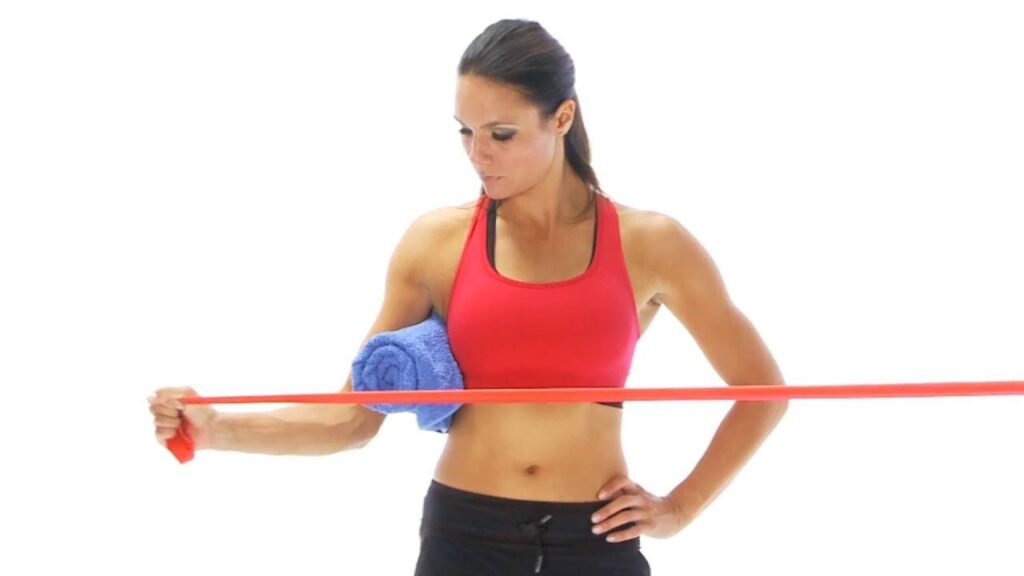In this post we discuss how to tell if a rehab exercise is working and what to change if you think it isn’t.

This is surely one of the most frustrating aspects of trying to recover from a stubborn injury.
I meet plenty of people who’ve been using exercises, sometimes for months at a time, and who’ve made no discernible progress.
In some cases, such as with the shoulder external rotation exercise pictured above, all it takes is a couple of tweeks to change their experience entirely.
So how do you know if the exercise you’re using is working? And what can you do if you think it’s not?
There are some longer term indications such as pain and your ability to carry out tasks that were previously problematic.
But what are the immediate signs the exercise is doing you good?
Did the exercise increase range of motion?
The first and most reliable indication is whether the exercise increased range of motion.
So for example in the shoulder external rotation exercise above, have you got more pain free motion immediately after the exercise?
The motion should feel smoother and more controlled if the exercise is doing its job.
Are you feeling the exercise in the right place?
Sensation isn’t everything and may take a while to develop, but in an ideal world you should feel the muscles you’re targeting.
You probably don’t want to become an expert on anatomy, but it helps to know where the muscles you’re trying to strengthen actually are.
Some of the muscles that perform external rotation of the shoulder joint are pictured below:
1) Infraspinatus 2) Teres minor

You’ll notice both muscles attach to the scapula (shoulder blade) and travel outwards towards the hunerus (upper arm).
It’s common however to feel this exercise on the top of your shoulder and also at the front. These are both indications the exercise isn’t doing what it should.
So if an exercise isn’t improving range of motion, or you can’t feel the right muscles working, what should you do?
Lower the weight and slow down
If you’ve been experiencing pain in an area it’s likely you’ll find it more difficult to contract the surrounding muscles.
Slowing down the repetition speed will allow you to focus more intently on what’s going on.
We often compensate for muscle weakness by adding speed.
The resistance profile of the exercise should match the strength profile of the muscles you’re challenging
That’s a bit of a mouthful but essentially it means the exercise should get easier where you’re weaker.
In the shoulder external rotation exercise example, this occurs when the shoulder is in its most externally rotated position. In other words when your hand is furthest from your body.
To make the exercise easier in this position, ensure the cable or resistance band gets very close to your abdomen. Move yourself forward if this isn’t the case.
Reduce the number of moving parts
The more parts of your body that are involved in an exercise, the less likely you’ll effectively train the part you’re after.
This is because your body is a master of compensation. If there’s a way to move around weak muscles, it will find it.
In the external shoulder rotation exercise it’s common to move the shoulder forwards and backwards (protraction and retraction), or attempt to push outwards (abduction).
Placing a rolled up towel between your upper arm and the side of your rib cage and squeezing into it puts paid to this.
Likewise sitting down with your back supported by a weight bench prevents you from rotating your torso to drive the motion.
Summary
If you notice either a reduction in range of motion following an exercise, or no change in pain free motion, it’s possible the exercise is too challenging for you.
Make the exercise easier and focus on feeling the muscles you’re supposed to be working.
If you develop some sensation in the target muscles you can be confident the exercise is doing you good.